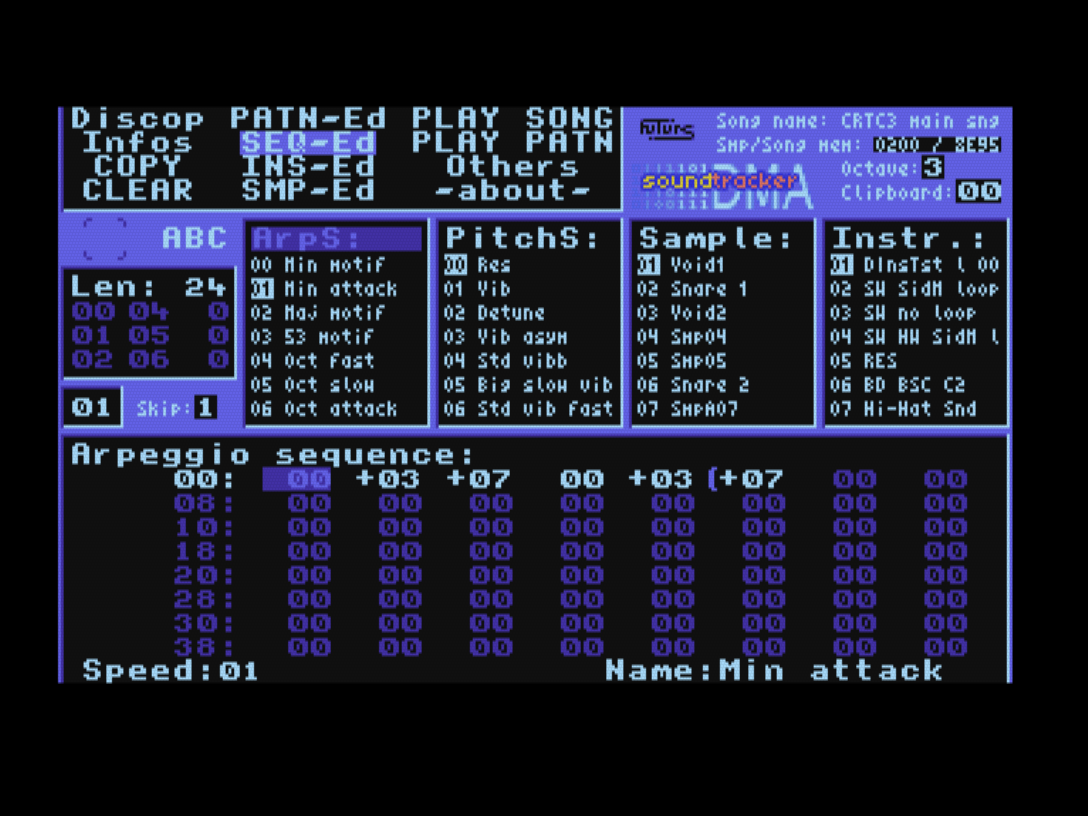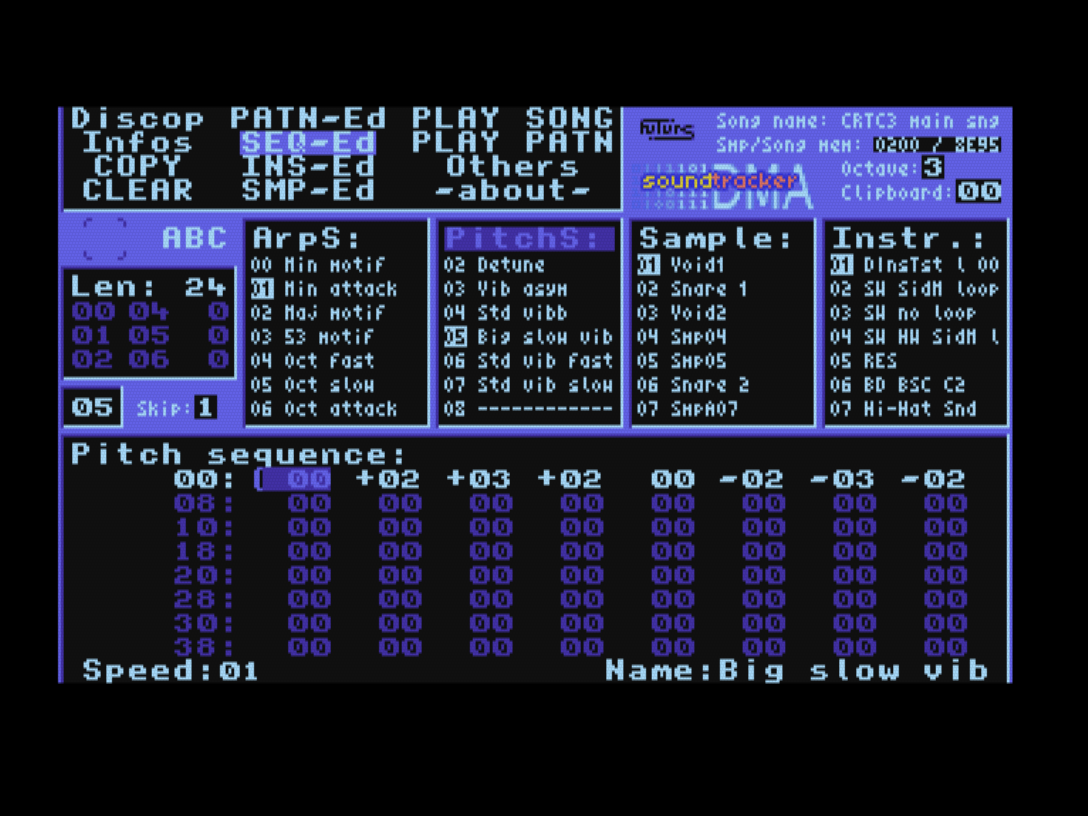Table des matières
Sequence editor
There are two types of sequences: arpeggio and pitch. Both editors are identical.
Arpeggio

For simple three-tone arpeggios, option A of the pattern may suffice. But for example to create complex arpeggios, you can create sequences via this editor.
The values indicate the semitones added or subtracted to the note played which is the reference (value 0).
You can choose the length and speed of the arpeggio. You can also choose at which step the sequence loops.
Pitch

Pitch sequences change the pitch of the sound over time. They can be used to create a more evolved vibrato or portamento than the pattern options allow.
The values are added to the period of the sound. These are signed 8-bit values (not 16-bit).
You can choose the length and speed of the sequence. You can also choose at which step the sequence loops.
Keyboard functions
| Key | Function |
|---|---|
| Esc | Leave sequence editor |
| Control + right | Switch to next editor |
| Control + left | Switch to next editor |
| Enter | Change sequence name |
| right | Move cursor |
| left | Move cursor |
| up | Move cursor |
| down | Move cursor |
| f1 | Go to first step |
| f3 | Go to last step (length) |
| f4 | speed+1 |
| f7 | speed-1 |
| Return | Set sequence length |
| Space | Set looping step |
| Shift + up | Increase value |
| Shift + down | Decrease value |
| Control + up | Increase value (+12) |
| Control + down | Decrease value (-12) |
| Tab | Copy value to next position |
| Del | Clear current value (set to 0) |
| Piano keys | Play sequence using current instrument |
| Any other key | Stop sound |
During name input:
| Key | Function |
|---|---|
| Esc | Abandon name input |
| Return | Confirm name |
| Del | Delete last character |